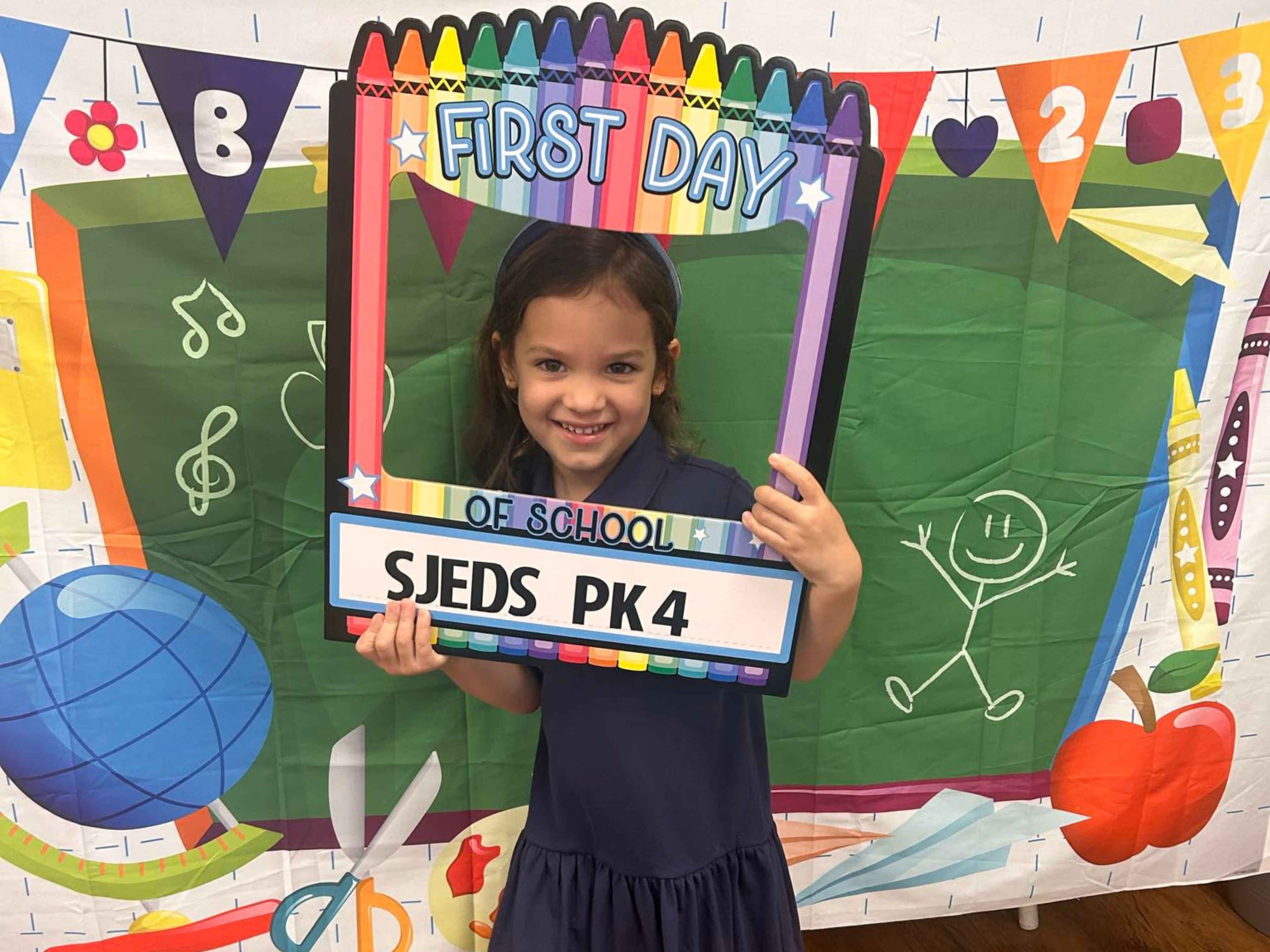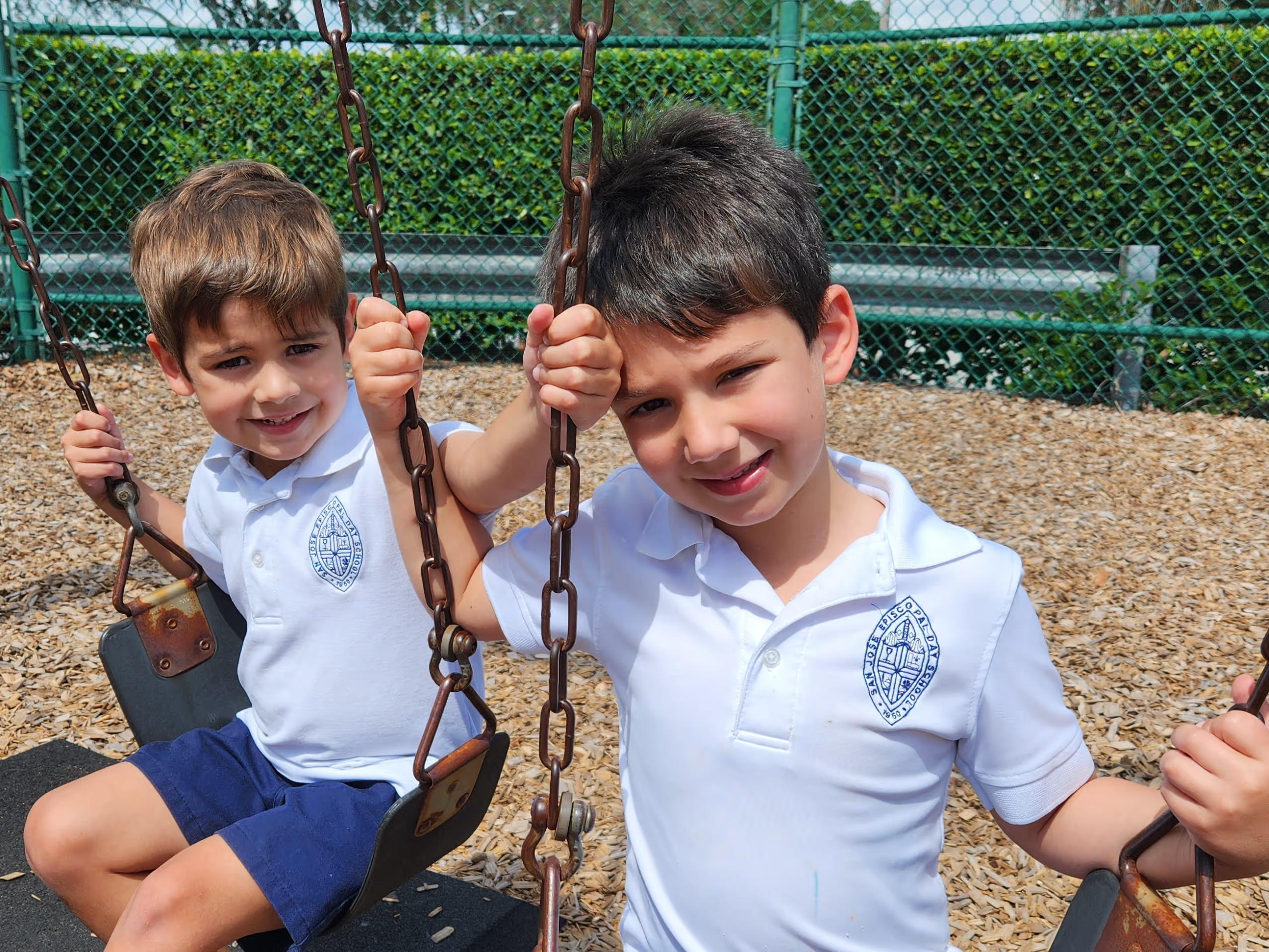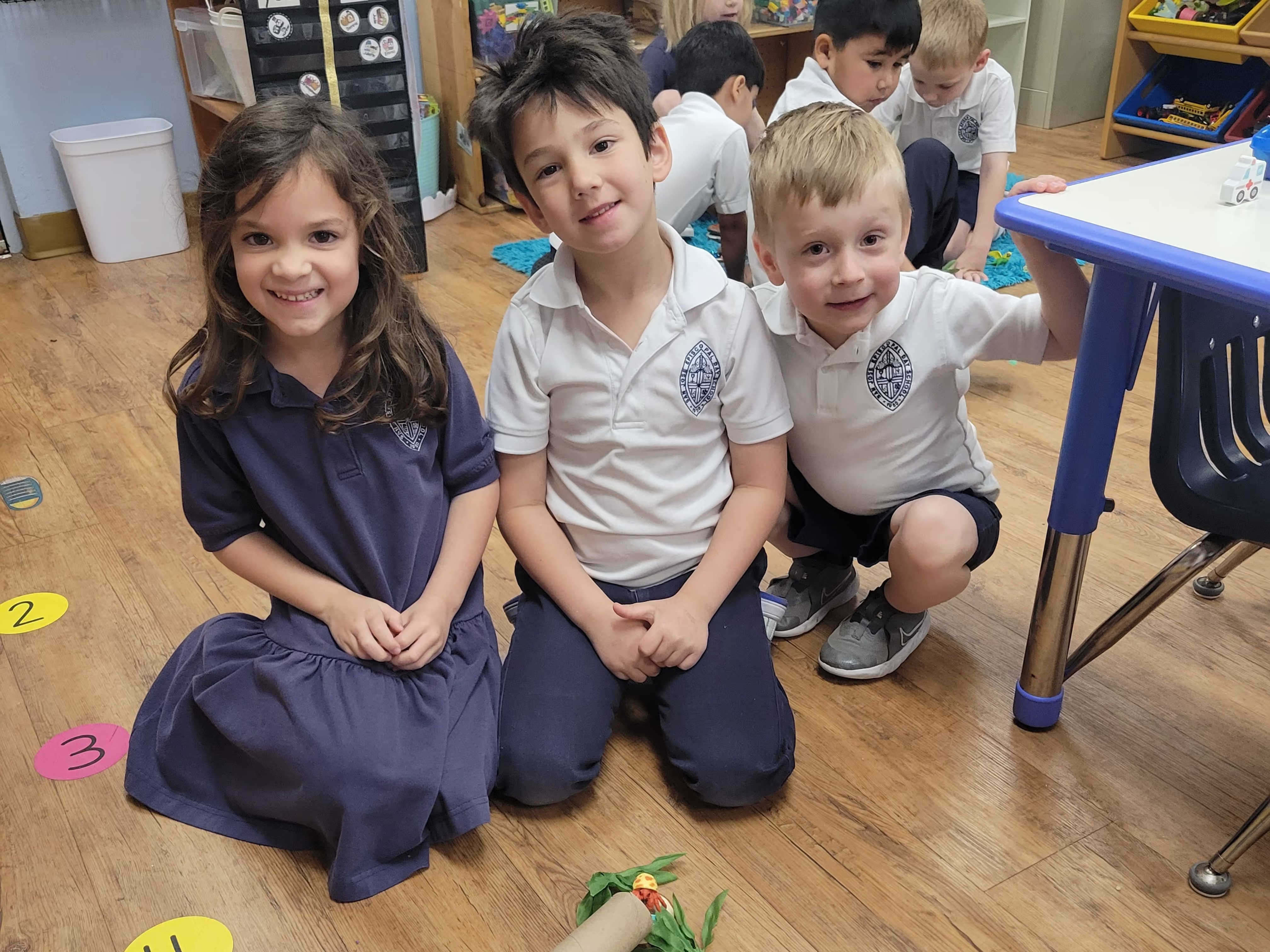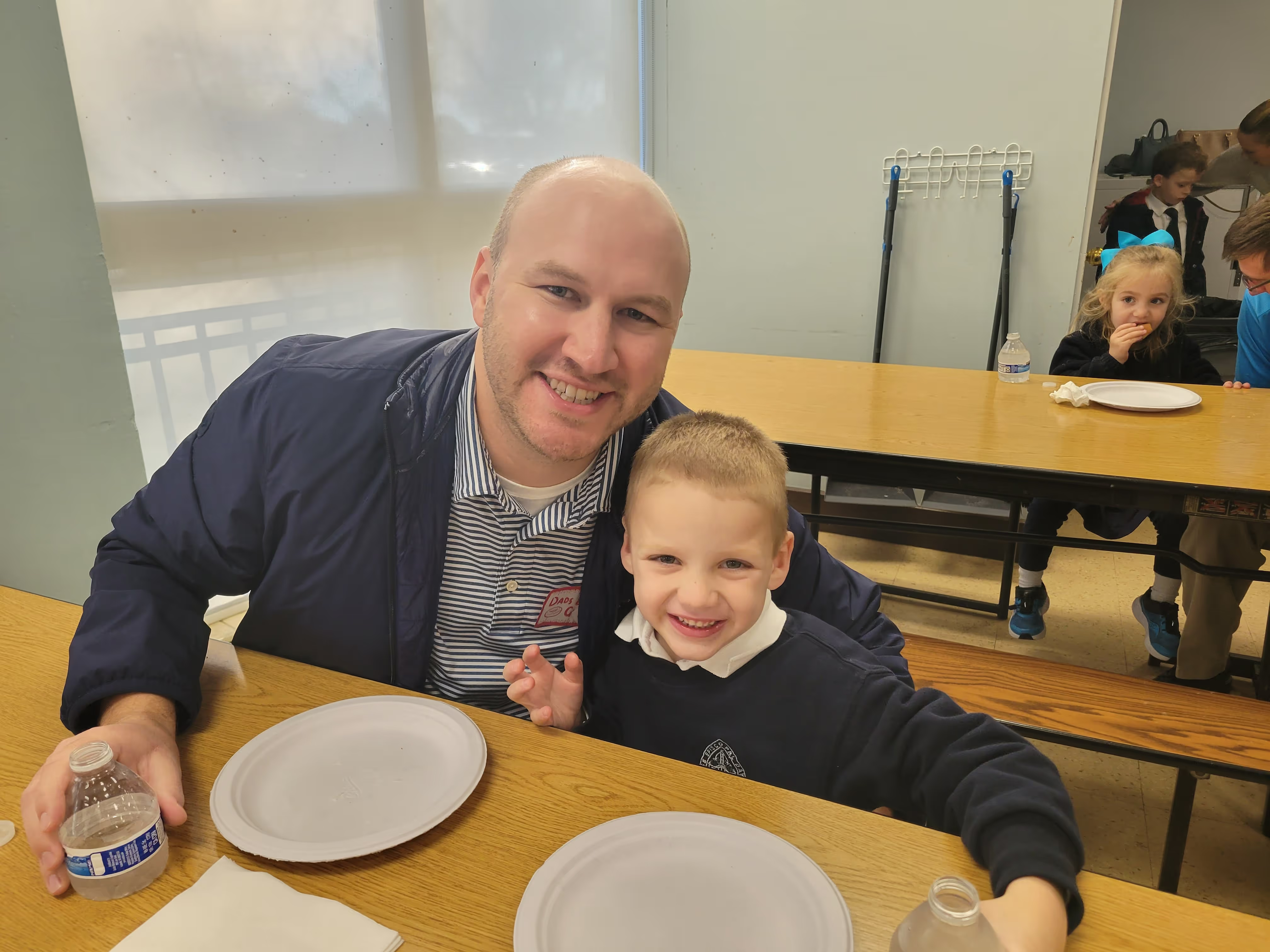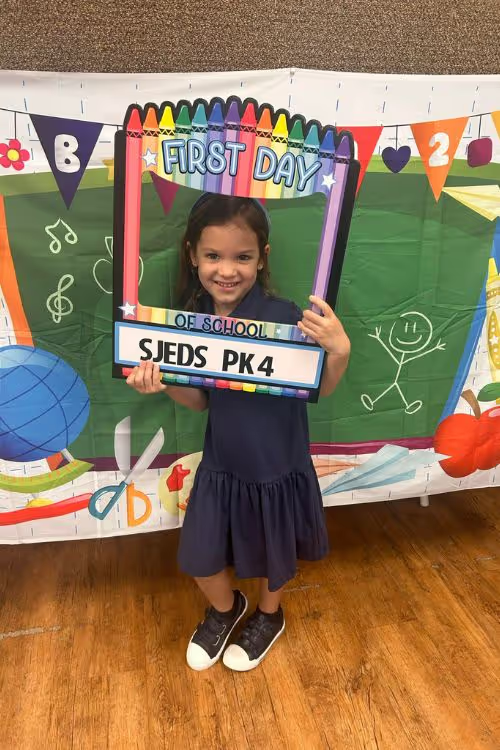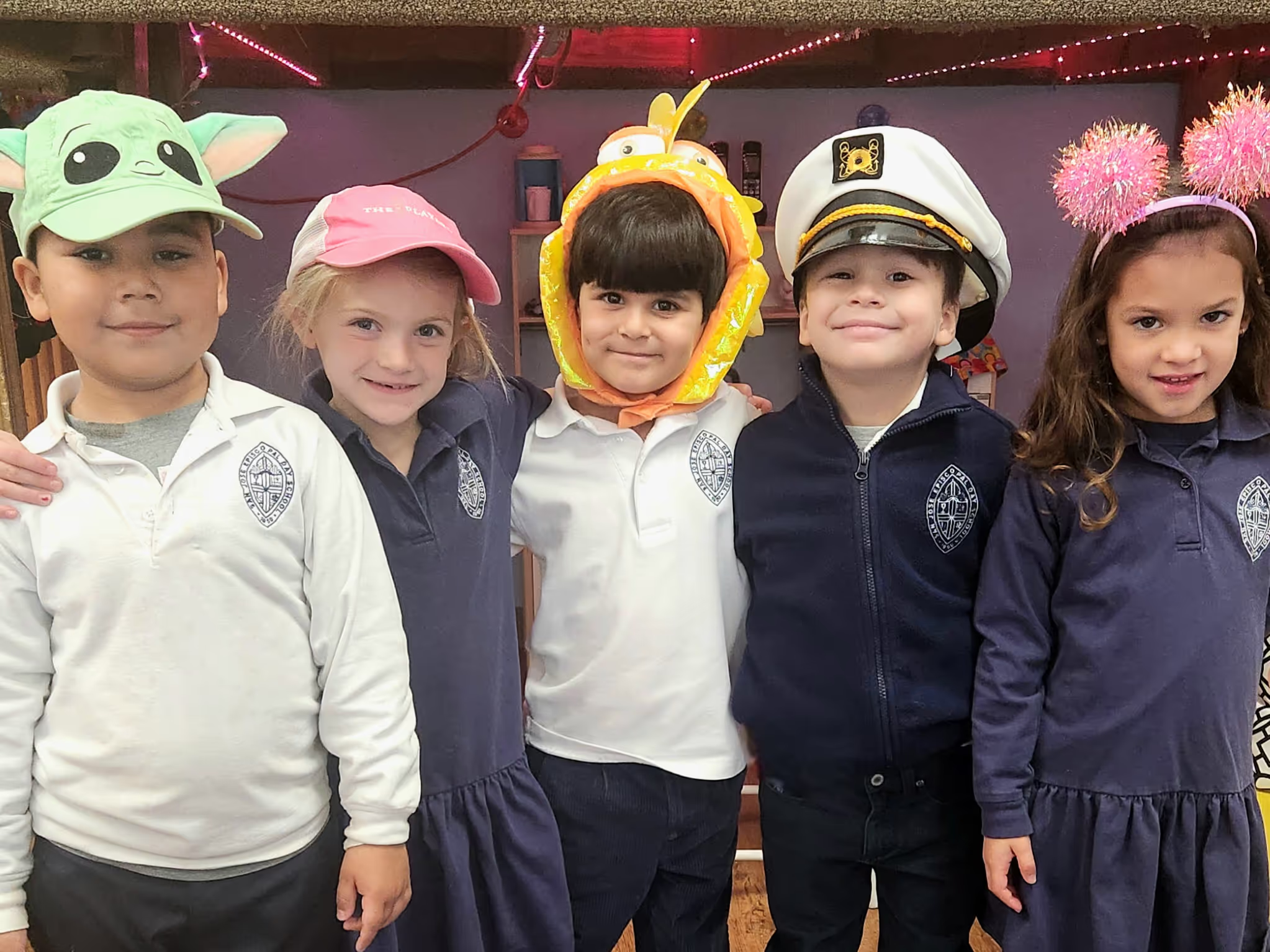
Pre-K4 Curriculum
In Pre-K4, early literacy blossoms through play‑filled, purposeful adventures that marry imagination with skill‑building. Each day begins with joyful sound play inspired by Heggerty routines—children clap out syllables in “alligators,” isolate the /s/ in “sun,” and gleefully blend /p/-/o/-/t/ into “pot,” strengthening the phonological and phonemic foundations that will power future decoding. Letter knowledge leaps forward as youngsters hunt for graphemes in environmental print, sculpt them from kinetic sand, and link them to lively motions, translating sound to symbol with growing confidence. Emergent readers gather on a cozy carpet to savor rich picture books, pausing to predict why the main character hesitates, marvel at an illustrator’s swirling watercolor skies, or notice the repetition an author uses for suspense—building comprehension and critical‑thinking muscles almost without realizing it.
Play centers turn literacy into real‑world magic: at the classroom post office, children pen invitations and weigh parcels; in the veterinarian clinic, they chart “patient” symptoms; at the construction site, they draft blueprints for block towers. These authentic writing encounters let every child stretch fine‑motor skills and experiment with spelling strategies exactly where they are ready to grow. Conversation circles invite young scholars to connect stories to their own lives, compare characters’ choices, and wonder aloud how books can teach us about coral reefs, astronauts, or kindness. By year’s end, students see books not just as classroom objects but as passports to the wider world and mirrors of their own experiences. Nurtured by intentional instruction and the joyful gravity of play, they leave Pre‑K4 brimming with curiosity, solid early‑literacy skills, and a passion for reading and learning that will carry them confidently into kindergarten and beyond.
Skills & Understandings:
- Selects books for reading enjoyment and pretends to read to self or others
- Makes connections between stories and real-life experiences
- Interacts appropriately with books and other materials in a print-rich environment
- Asks to be read to, asks the meaning of written text, or compares books/stories
- Can retell or reenact stories with increasing accuracy and complexity
- Asks and answers appropriate questions about the story
- Can distinguish the individual sounds in spoken words, words in spoken sentences, and can break down and form compound words
- Combines onset and word families to form one-syllable words
- Recognizes that print conveys meaning
- Recognizes almost all alphabet letters when named or shown
- Knows the associated sounds of a growing number of letters
- Intentionally uses scribbles and attempts at writing to convey meaning
- Uses letter-like shapes or letters to write words or parts of words
- Writes own name (e.g., first name, last name, or nickname)
Students build powerful early math foundations through joyful exploration, guided instruction, and meaningful play. With an emphasis on both fluency and understanding, children learn to count to 31, use one-to-one correspondence, and begin writing and recognizing numerals. Through hands-on activities with blocks, manipulatives, and sensory materials, they compose and decompose sets, laying the groundwork for addition and subtraction. They extend their thinking as they recognize and build complex patterns and explore both two- and three-dimensional shapes—describing, sorting, and constructing them with excitement. Measuring becomes a daily part of discovery as children compare length, height, and weight using rulers, scales, and creative tools like linking cubes or yarn. Positional language and spatial reasoning are reinforced during games, center play, and whole-group activities, while math talk and problem-solving are woven naturally into routines. This rich, developmentally attuned approach ensures that students leave Pre-K4 not only with a strong grasp of early numeracy but also with a sense of confidence, curiosity, and joy in mathematics.
Skills & Understandings:
- Counts aloud and identifies numbers from 1 to 31, demonstrating growing number fluency and confidence
- Uses one-to-one correspondence to count up to 15 or more objects placed in a row with accuracy
- Reads and writes numerals from 1 to 10 using a variety of hands-on and developmentally appropriate activities
- Begins composing and decomposing sets up to 8 using objects, fingers, or role-play to explore the foundations of addition and subtraction
- Identifies, extends, and creates complex patterns, such as ABB and ABC, recognizing repeating units and completing sequences
- Describes and sorts both 2D and 3D shapes using attributes like number of sides, corners, and relative size
- Constructs with three-dimensional shapes through block play and real-world exploration, building spatial awareness
- Uses standard and nonstandard tools to measure length, weight, and capacity, comparing and describing measurable attributes
- Understands and uses comparison language such as “more,” “less,” “same,” “taller,” or “shorter” in context
- Follows and uses positional terms like "next to," "between," and "above" to describe object locations and solve spatial tasks
- Engages in early problem-solving tasks using reasoning, visuals, and hands-on tools to make sense of mathematical situations
- Applies number knowledge during routines and play, such as counting calendar days, sharing materials, or setting up a snack
In PreK-4, the foundations of social studies are forged through joyful and developmentally appropriate learning encounters that nurture curiosity, understanding, and a sense of community. Young learners begin by exploring concepts of self, family, and classroom roles, building an awareness of how individuals belong to and contribute to a close-knit community. Through storytelling, role-playing, and classroom routines, they begin to understand the importance of rules, fairness, and why we follow mutually-agreed-upon expectations. Children are introduced to the idea of time through sequencing daily events and recognizing changes over time, such as seasons and holidays. They explore simple geography by identifying places in their environment and using basic maps and positional words. Exposure to community helpers and symbols like the American flag helps students recognize their place within a broader world. These early experiences in social studies lay the groundwork for responsible citizenship, empathy, and a lifelong interest in how people live, work, and relate to one another.
Schedule a Tour
Come see for yourself why SJEDS is an investment in a brighter future.





